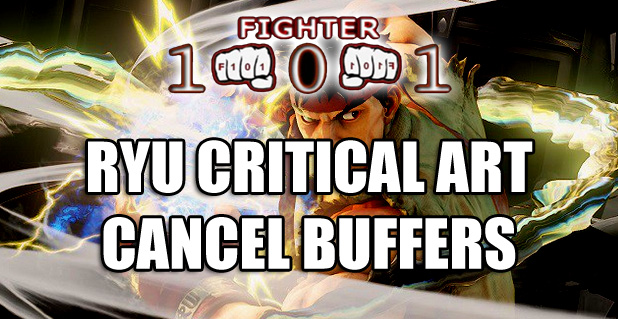
There is no question that Street Fighter V has turned a lot of gamers into fighting games and the competitive level that us being displayed for the game is quite high. The problem with complex fighting games like SFV is that the learning curve can be quite long. Most new players spend a little while beating the challenges and trials for each character and they feel like they are ready to play competitively. Then, to their surprise, none of the moves they practiced so much while doing the trials are coming out when they are under pressure.
The reason why this happens is due to muscle memory. Bruce lee once said, “I fear not the man who has practiced 10,000 kicks once, but I fear the man who had practiced one kick 10,000 times.” This philosophy applies perfectly to fighting games too. This means that if you want to be able to land Critical Arts with your favorite street fighter character, you need to practice the move as much as possible.
The buffer technique and super canceling
Ok, you might be wondering what a super cancel is, but that is basically what a critical art is, with the only difference that super cancel is the name that was given to it in the early days of Street Fighter. Capcom just decided to come up with a fancy new name to call the Super. There are some players who perform their critical arts by pressing a normal attack such as crouching medium kick, and then they perform the super cancel (critical art) motion.
There is a much better way to do this and it’s called a super cancel buffer or in this case, a critical art buffering. The motions are different, but you are still canceling the normal move into a super, so there is a buffer that leads to a cancel.
If you watch the video below, you will see a perfect example of this technique with Ryu. I’m starting the super motion with down, down/forward, forward, and then I initiate the second part of the super motion with down, but before I do the next down/forward I press the normal move that I want to cancel to critical art (in this case it’s the crouching medium kick). Finally, the punch button (in this case a medium punch) is pressed like it would be pressed normally when doing a critical art at the end of the motion.
Check the video for real time and slow motion footage:
Buffering works in most 2D Fighting games
The beauty of the buffering technique is that you can use it in most video games. It works with Street Fighter 2 games, also with the Alphas, the 3S’s, SF4 and SFV. It also works in KOF and other similar titles. This means that learning this technique is going to enhance your general skill level in fighting games, but you need to practice it hundreds of times before it becomes muscle memory. Until then, you will fail to do it under pressure and that is essential in fighting games.
The video below is for SSF2T, not for SFV, but it shows a good variety of ways to implement the buffer and this works with most fighting games. It also gives you a detailed input guide of the motions:
Regular “Renda” cancels versus Buffers
Some players say that buffering your super cancels is not as effective as Renda canceling, also known as chain canceling. They say that buffering doesn’t allow you to hit confirm, but that is far from true. You can also add an extra punch or kick before you start the critical art buffering sequence in order to hit confirm. You can see an example on the Ryu Critical Art Cancel Buffers Video.
A failed buffer cancel usually allows you to stay safe
There will be enough block stun for you to be safe after doing a critical art cancel because the normal before the super is going to act as an “anchor” that won’t allow the character to avoid the critical art from hitting them while they block. The time the character spends without being able to move or counterattack after blocking is called block stun and it allows you to stay safe after you perform your critical art (at least with most characters)
– Fighter101
